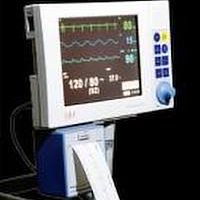
Five levels of anesthesia used in Cosmetic Surgery are:
- local anesthesia only
- local anesthesia with valium
- IV sedation moderate, also known as Twilight Anesthesia
- IV sedation with propofol- deep sedation
- General Anesthesia with a ventilator
In his articles about Breast procedures, Dr. Ricardo L. Rodriguez, Baltimore Plastic Surgeon, discusses Breast Lift techniques, implant selection, and the use of IV Anesthesia (instead of General Anesthesia) with Breast Augmentation procedures.

Five levels of anesthesia used in Cosmetic Surgery are:
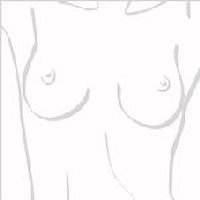
Dr. Rodriguez discusses the difference between fat injections for Breast augmentation and stem cell enhanced fat injections to the breast. He cites the ASPS position paper regarding fat transfer. Read about it in his CosmeticSurg blog.

Tubular breast deformity is a condition where the breasts have the shape of cylindrical tubes. Dr. Rodriguez, a Yale trained plastic surgeon, explains how this can be corrected with a certain type of implant and incision. Read about it in his Cosmeticsurg blog.

I did my first case of micro fat grafting to the face over 20 years ago. It was a patient that had acne scarring in her face. During the decade of the 90’s I had tried laser for that problem, under the theory that you could level the skin.
Frankly the results were OK, not great, because the pits were not filled. Fat grafting was used to fill the pits under the skin. The great surprise was how good the skin looked after the fat injections ! The skin became rosier, softer, and just younger looking.

The choice of anesthesia for Breast Augmentation are either General Anesthesia or IV anesthesia. With IV anesthesia the recovery is very quick, less nausea, and no lousy feeling the days after surgery. In addition, the risk of getting a blood clot or pulmonary embolism is almost eliminated.

Fat injection techniques are now being used in reconstructive breast surgery. Dr. Rodriguez, a Yale trained plastic surgeon explains why Breast reconstruction with fat injections may be a good choice for lumpectomy patients. Read about this new frontier of Plastic Surgery in his Cosmeticsurg Blog.
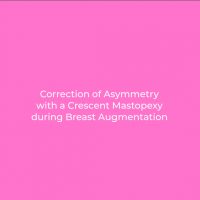
The Crescent lift mastopexy is a surgical technique used when only a minimal Breast lift is needed. It avoids a lot of scars, yet lifts the breast to result in a perky breast. Read about it this Breast lift technique performed by Dr. Ricardo Rodriguez in Baltimore.
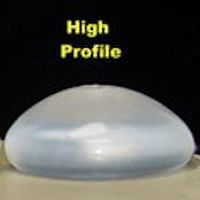
High profile breast Implants have a smaller base diameter so it preserves the appearance of a narrower chest, and you get more anterior projection from the same 400cc volume. High profile implants have a more up front look.

A lot of patients who come in for a Breast augmentation or a Breast lift with implants consult will usually make a comment about cleavage. Some patients don’t want “that fake look,” yet others specifically ask for “a lot of cleavage.” It helps when patients bring in pictures, because cleavage is one of those words that, like “natural look,” can have different meanings to different people. In this post I will talk about cleavage, and how it is related to surgical technique and patient anatomy.The word cleavage is derived from the word cleft. According to the Merriam Webster online dictionary… cleft : usually V-shaped indented formation : a hollow between ridges or protuberances The misunderstanding between plastic surgeon and patient comes from knowing which end of the “V” we are talking about. Does the patient want upper pole fullness, which is prominent at the upper part of the breasts? Does the patient want medial cleavage, which is breasts that are close together at the midline? Or is it both upper pole fullness and medial cleavage? The surgeon has two surgical methods to improve cleavage with breast implants.
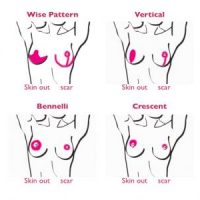
I have been looking at some of the breast implant forums, and there are a lot of issues related to breast scars. It seems most surgeons use the Wise pattern, or Anchor scar, and some use the Benelli scar. A few surgeons use the Vertical scar or the Crescent scar. I use all of these breast techniques, except the Wise pattern scar. I feel that the Wise pattern technique makes unnecessary scars.
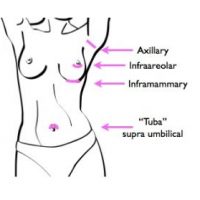
What type of incision should you get for your Breast augmentation procedure? In addition to the implant size this is another very important decision that you need to make. It seems to me when I ask a patient whether they have a preference as to what kind of breast incision they want, the most common answer is that they want the type of incision that they have seen on a friend. Likewise, the second most common comment is “I don’t want such and such incision because somebody I know had one and it looks bad”. The truth is every type of incision has its pros and cons. Here is my explanation of the types of Breast augmentation incisions…

I have been doing the Vertical Scar Breast reduction since 1989, having learned it in Nice, France, from Dr. Claude Lassus, a French plastic surgeon, who is the originator of the technique. When I left France, I started doing the technique at Yale, where I was a faculty member in the plastic surgery department. I presented the first scientific paper on the technique in the US in 1992 at the 25th anniversary meeting of the American Society of Aesthetic Plastic Surgeons.
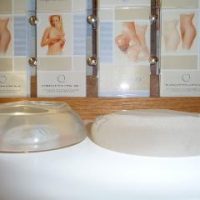
Many times during a breast augmentation consult a patient will say to me: “I want to look proportionate.” In other words, the patient wants to make sure that a particular implant size will look right on her. The right proportion is determined by several factors. A good proportion is not only determined by the size…
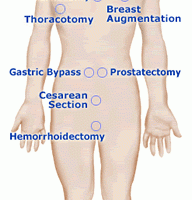
Exparel is a long acting local anesthetic which is injected into the operative area at the end of the procedure. Like the pain pump, it focuses just on the operative area, and does not disseminate to the entire body like a narcotic does. The function of the Exparel is to numb the area of surgery so you do not feel pain. With cosmetic surgery, patients only need the one injection, and the pain control lasts for about 3 days. Similar to the pain pump, patients take fewer narcotics post operatively, because the pain is more controlled.

As a senior (a little over 60 years old) I had given continued thought and prayer to having Breast reduction surgery for a number of years (at least 30 or more). In the past few years the thought and prayers became more and more on my mind and approximately 2 years ago I went as far as having a consultation with a plastic surgeon. I don’t know if it was my frame of mind or exactly what all the reasons were, but I was not comfortable with the surgeon, his staff, or even the thought of continuing on with this surgery. I didn’t go back for a 2nd visit…